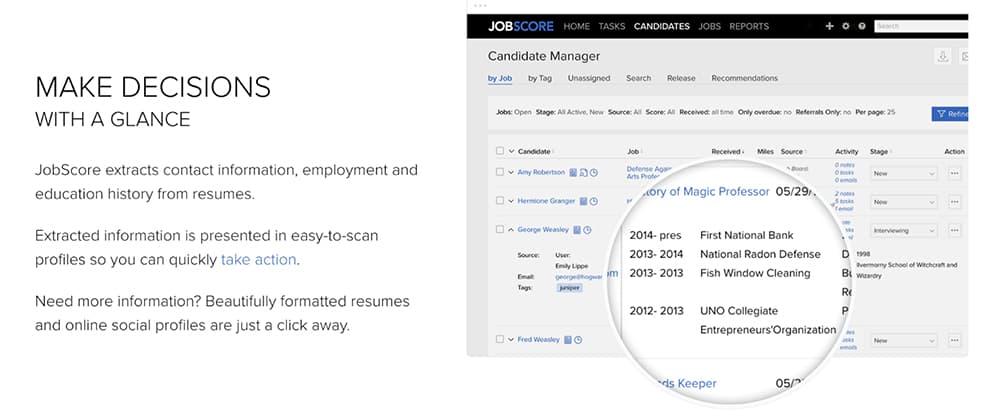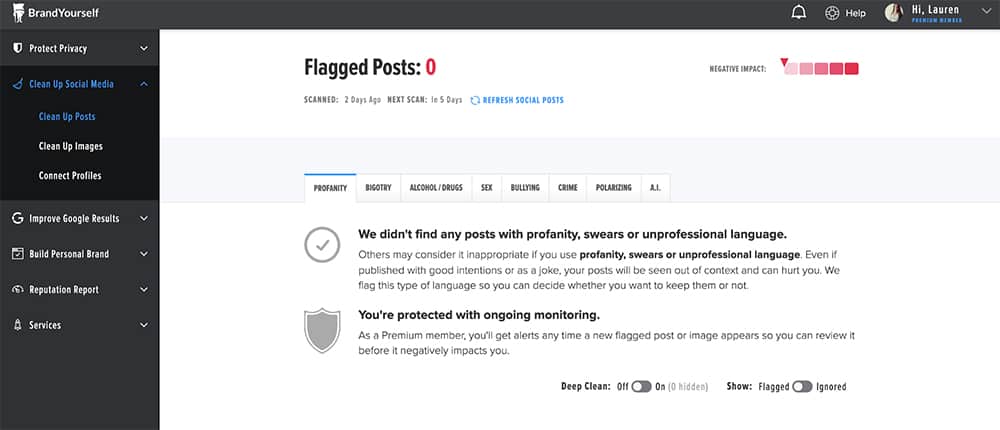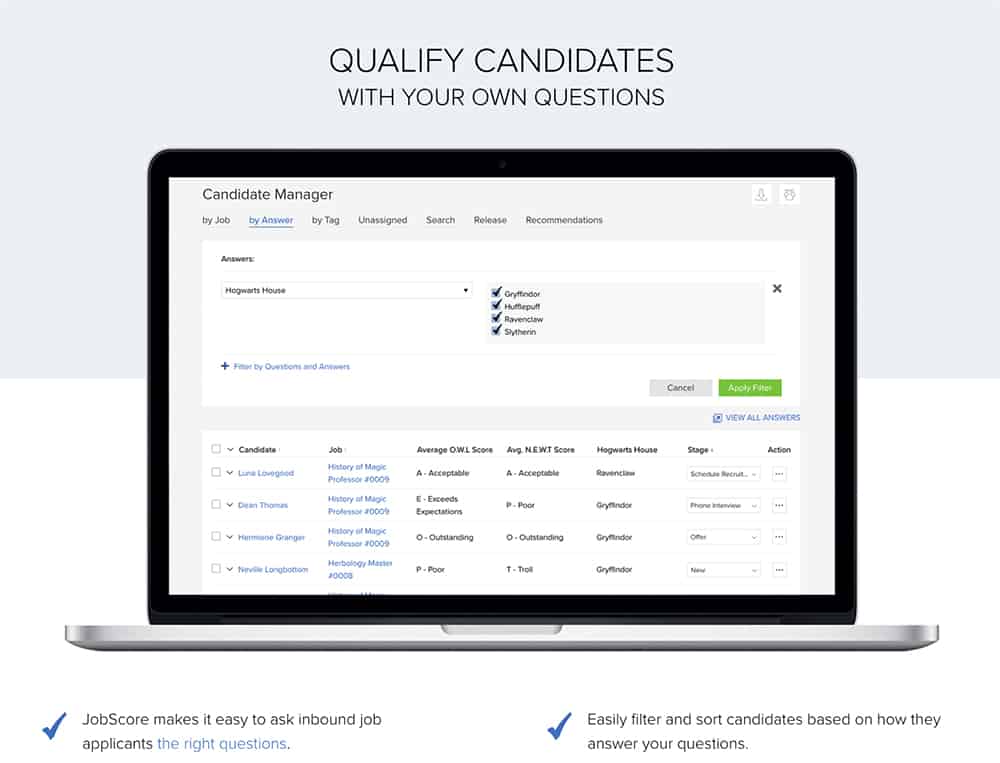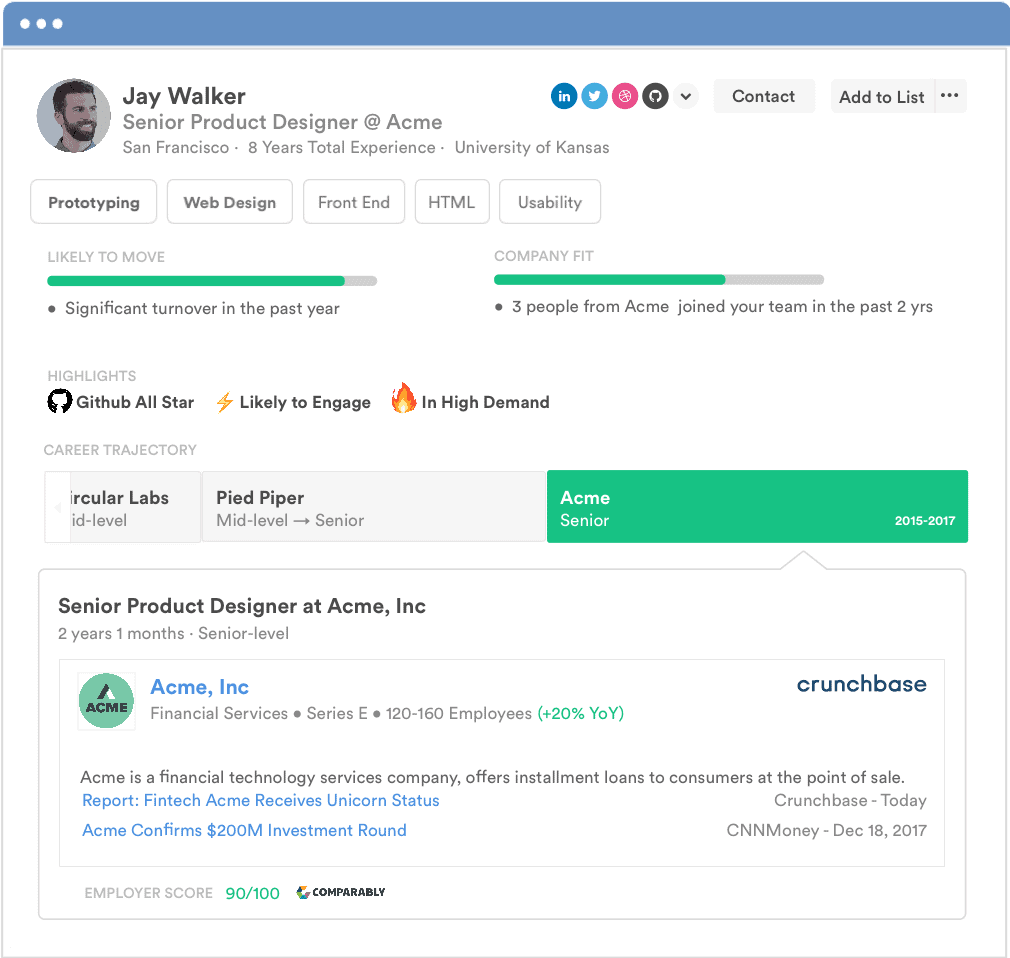Table of Contents
A friend of mine had been applying to jobs prior to the pandemic, and he hadn’t landed a single interview.
I thought I’d have the solution to his problem in all of five minutes (I used to be pretty good at applying for jobs online), but it turns out he was already doing everything “right.”
His resume listed quantified bullet point after quantified bullet point. The formatting looked good. He tailored his cover letters to the position descriptions. His online presence is superb; he owns the front page of Google results for his name. And LinkedIn rated his profile as an “All-Star.” Oh yeah, he’s also gainfully employed.
You might be thinking, “Well, if he applied through job boards, that’s his first problem.”
And I’m thinking, “He used to apply through job boards and land interviews more than 60 percent of the time just a few years ago, so what’s changed?”
Turns out, A LOT. And I would’ve never known if it wasn’t for my friend stumping me with his seemingly simple quandary. I’m flabbergasted by how out of touch I was with the modern job hunt, which is why I needed to write this post.
I created this article to demystify the modern recruiting process and help qualified candidates figure out how to apply for jobs online. So if you’re ready to make it past the initial resume screening process and score an interview—and ultimately land the opportunity you deserve—then keep reading.
Why is landing a job so hard?
The world has changed in many ways since the start of the Covid-19 pandemic, including the way we work and apply for jobs—especially for young people.
According to a 2020 study from the Economic Policy Institute, unemployment among workers between the ages of 16 and 24 rose from 8.4% in 2019 to nearly 25% in 2020.
Yet, even prior to the world turning upside down, the lamest of job ads received an insane amount of applications. The consensus seems to be about 250 applications per job listing, on average.
Of course, super-competitive positions get a lot more… supposedly anyway.


But seriously, they don’t—not in a metrics-driven world, where companies are obsessed with automating everything to do things as fast as possible, even at the cost of quality.
Applicant Tracking Systems: What you need to know
Enter the $1.3 billion recruiting technology/software industry.

While there are a variety of modern recruitment tools for each stage of the hiring process, the one that will affect you the most is the Applicant Tracking System (ATS).
It’s pretty much guaranteed that your application is going through an ATS any time you apply for a job online, since at least 98 percent of Fortune 500 companies use one.

TLDR: ATS help recruiters/hiring managers collect, sort, and organize a large number of applications. And if you don’t know much about how these systems work, you’re going to have a hard time getting your application in the hands of a real human.
Most common ATS features
Rather than manually reviewing each resume, recruiters and hiring managers using an ATS search for resumes based on keywords, or have the system filter or automatically rank applicants.
In many cases, recruiters rely on the technology to do a first pass of resumes, meaning you can be removed from consideration by an algorithm without ever being reviewed by a real person.

While there are hundreds of ATS on the market, most of them list the same features. Understanding them is key to landing an interview, so here are the big ones that will determine whether a human ever sees your resume.
Automatic applicant ranking/scoring
Many ATS provide an automatic “match rank” or score for each applicant.
The system will parse the information from your resume, and compare it with the job description, looking for specific keywords, then provide a score from 0 to 100, or one to 10, that tells recruiters how qualified a candidate is for said job, based on the criteria set by the hiring manager.

For example, job posts that ask for your location are likely using that information as a filter that will alter your overall qualification score. If a job posting is looking for someone with management experience, they’ll scan for words like “manager” or “team leader.”
Comprehensive Candidate Profiles
Many ATS will automatically create a comprehensive, wildly detailed profile of you based on your digital footprint and other “public” information. All they need is your email address to populate every piece of available content about you online.
According to Workable, aggregating candidates’ public information is a way to “humanize” the process, and they list it as a must-have feature for today’s ATS. Here’s how they describe it:
“I want to see faces dammit. And tweets. And maybe other stuff that humanizes this record.”
While I appreciate the idea of humanizing these rather cold automated systems, I’m not sure I agree with that assessment. Such tools can lead to unconscious bias, which may present even more roadblocks for job candidates.
Many recruitment tools even go so far as to make predictions about candidates based on the information they surface about them online.
Resume Parsing
When aggregating information about you, many ATS use what’s known as “resume parsing”—that’s how an ATS extracts and organizes your resume into “structured data,” so they can do stuff like rank/score you automatically.
These tools need to be able to scan and read the text on your resume, which means if you’re submitting your resume as a PDF, or using creative typography that’s hard for these systems to read, you’re putting yourself at a disadvantage. The ATS may not be able to read your data well, which will result in it being jumbled when handed over to a human, or skipped over altogether.
Resume storage and search filters
Here’s one good thing about ATS—even if you are passed over for a role, the system will likely store your resume in their database. This allows potential employers to access your resume in case they have another role to fill that matches your profile.
ATS allows hiring managers to search by any keyword, and often with Boolean search, which connects keywords using AND, OR, NOT and NEAR.
For example, they may be able to search for something like “Graphic designer AND web developer NEAR Orlando, Florida.”
Some tools will even let job managers filter candidates based on things like how often you’ve switched jobs, how old your profile is, or whether you’ve been referred or recommended by someone already working within their organization.
Filters may include the job seeker’s location, application source, age of your profile, and whether or not you’re an employee referral.
So what can job applicants do to make sure their resumes make it past these automated systems?
One major step you can take in the right direction is to include keywords you suspect are relevant to the jobs you want in your resume. This will help you stand out when employers are using an ATS.
I’ll cover other resume and job tips a little later in this article, but for now, let’s review a few other (non-technical) aspects of the recruiting world that may be holding you back from getting a job.
The dirty little secrets of the recruitment process
In an ideal world, all hiring managers would follow the rules when hunting for candidates. But in reality, there are some (often shady or even downright illegal) things that recruiters may do that affect your likelihood of getting a job.
Backchanneling / backdoor references
It’s no secret that many recruiters rely heavily on LinkedIn to find candidates for open positions.
If a recruiter sees your resume and is interested in interviewing you, they may reach out to you right away for more information. But there’s a chance they may first do something a little sneaky (and potentially illegal) on social media channels like LinkedIn.
Hiring managers may message any mutual connections you have to see what they’ll say about you.
This is why it’s important to nurture connections on LinkedIn when you’re hunting for a job, and to gather as many positive recommendations on your profile as possible. You want to make sure that anyone a recruiter contacts will have great things to say about you—and if you’ve burned bridges with a former employer for whatever reason, it is likely wise to remove them as a connection on the platform.
Related:
You’re being googled
Recruiters may use LinkedIn to initially find potential candidates, but you can almost guarantee that once they are genuinely considering you for a job, their next step will be to turn to Google.
They’ll enter your name or email address into the search engine and look for blog posts you’ve written, images of you, and anything else that might be posted online.
This is why it’s so important to monitor your search results when you’re being considered for a job—more on that later in this article.
How (sub)conscious bias factors into online job searches
Often, when hiring managers are looking to bring someone into a role, they have a preconceived picture of exactly who they want to hire. And whether they admit it or not, the “features” they’re looking for in a candidate can be highly discriminatory.
Here are a few of the biases that frequently plague the hiring process:
Bias 1: Body type discrimination
Many people make unjust assumptions about a person based on how they look—and this includes hiring managers. Even if your job has nothing to do with your physical abilities, it’s still very possible to face discrimination based on your body type.
Applying for jobs online may decrease this somewhat—without meeting you in person first, it will be harder for hiring managers to make an unfair conclusion about you based on your body type.
But with most online job applications, you’ll still be asked to do an interview in person or over a video call. And when this happens, it’s possible they will make a judgment based on your appearance.
Bias 2: Racial, gender, and sexual orientation discrimination
Many job seekers may face discrimination based on their racial or ethnic background, their gender, or their sexual orientation—even though this is very much illegal.
A 2021 study from the National Bureau of Economic Research found that candidates with distinctively black names were 2.1% less likely to be contacted by a potential employee compared to people with distinctively white names.
Meanwhile, a 2019 UPF study found that women on average are 30% less likely to receive a call from a job interview when compared to men with the same characteristics and skills.
According to a study from the Williams Institute of UCLA published in 2021, researchers found that one in 10 people who identify as LGBTQ+ have faced employment discrimination.
Bias 3: Ageism in the workplace
When we talk about age discrimination in the workplace, it’s often in regards to older candidates being turned away from jobs because of their age. And indeed, this is a major problem for many people looking for work later in life.
However, young people also face ageism when it comes to applying for jobs online or in person.
A study published in the Journal of Experimental Psychology: General found that young adults face some very challenging social judgments at work from their older colleagues.
How to land a job interview
It may feel discouraging once you learn about all of the hurdles applicants face when looking for jobs online.
But I don’t want you to give up hope. Even if it feels like the odds are stacked against you, there are still things you can do to boost your chances of making it past the ATS systems and overcoming biases from hiring managers.

Here’s what you must know before applying to jobs today.
Related:
Job application tip 1: Audit your LinkedIn connections
I’ve previously written about how to make a great LinkedIn profile, which you can read here, so I won’t cover all the nitty gritty details in this section.
One thing I didn’t cover is the importance of cleaning up your LinkedIn connections. By “cleaning up,” I mean you should remove any connections who might say something not positive about you if a recruiter/hiring manager messaged them on LinkedIn.
You can take additional steps with your LinkedIn profile to make yourself more hirable. A professional photo can help—and if you’re a younger worker, uploading a profile photo that makes you look a few years older may be worthwhile. Just be sure your profile still looks like you, so employers aren’t surprised when they call you in for an interview.
Also, take time to ensure that the Experience section of your LinkedIn profile aligns with the most recent resume you’ve submitted—many job recruiters will compare your resume with your profile to make sure you’re being honest about your job history.
Job application tip 2: Audit your online presence
First, I highly recommend subscribing to BrandYourself, which I detailed in an earlier post.

Now that I use the tool, I know my private information is protected and securely monitored, I’m alerted when my information is uploaded somewhere new, and I benefit from improved Google search results, along with social media audits/monitoring.
The tool can help you prevent your private information from being used in a nefarious ATS program. And if you have a long history of posting less-than-professional stuff on your social media pages, BrandYourself will flag potentially problematic posts so you can remove them before a recruiter sees them and makes a judgment call.

In addition to BrandYourself, consider creating a professional Instagram account if you don’t want recruiters to find your private, personal Instagram account. This way, recruiters can still learn about you from Instagram, and you can keep your personal profile private. Also, if you blog or have had a blog, written guest blogs, or have created any other content online, go back and audit your work. If possible, remove any posts that may alienate prospects.
Job application tip 3: Use AI to create the perfect resume
During my research, I found two legit tools that allow you to efficiently personalize your resume to any job description: JobScan and ResumeWorded.
They’re freemium tools, but I purchased the premium version to give them a test drive.
First, you’ll upload your resume (by saving it as a PDF) and your LinkedIn profile (via a URL). Then you’ll copy and paste a link to the specific job description you’re applying to.
The tool will scan your resume and give it a score, which tells you how much your resume matches the job description, based on a variety of factors.
If you pay for premium, you can easily create a bank of bullet points, and save different resumes for different types of positions. This is a huge time saver, and I love it.
Lastly, these tools also rate and review your LinkedIn, giving you specific optimization tips to improve your profile.

Job application tip 4: Make people come to you
Even though the current job market is stacked in favor of job applicants, it’s still a very crowded playing field—especially for young workers who are trying to carve out their career path.
Related:
This is why it’s so important to cultivate a personal brand. If you spend the time creating a digital profile yourself (using your social media pages, a portfolio, and perhaps a personal website), you’ll have the advantage when it comes to applying for jobs.
While branding yourself is a long-term play, it’s important if you want to always be employed today and have recruiters/hiring managers coming to you.
I wrote an in-depth guide to personal branding, which I highly recommend you read.
And that’s how you land a job interview
If you’ve made it this far in this article, you should know everything you need to know about the modern recruitment process in the U.S. and how to apply for a job online.

Is it unfair? Definitely. Is it biased? Most of the time. Job searching is difficult, complicated, and more competitive than ever—for a whole bunch of reasons.
But even with these challenges, you can still make your resume stand out and find a job that brings you joy. With the tips in this article, your online job search will be easier than ever.








